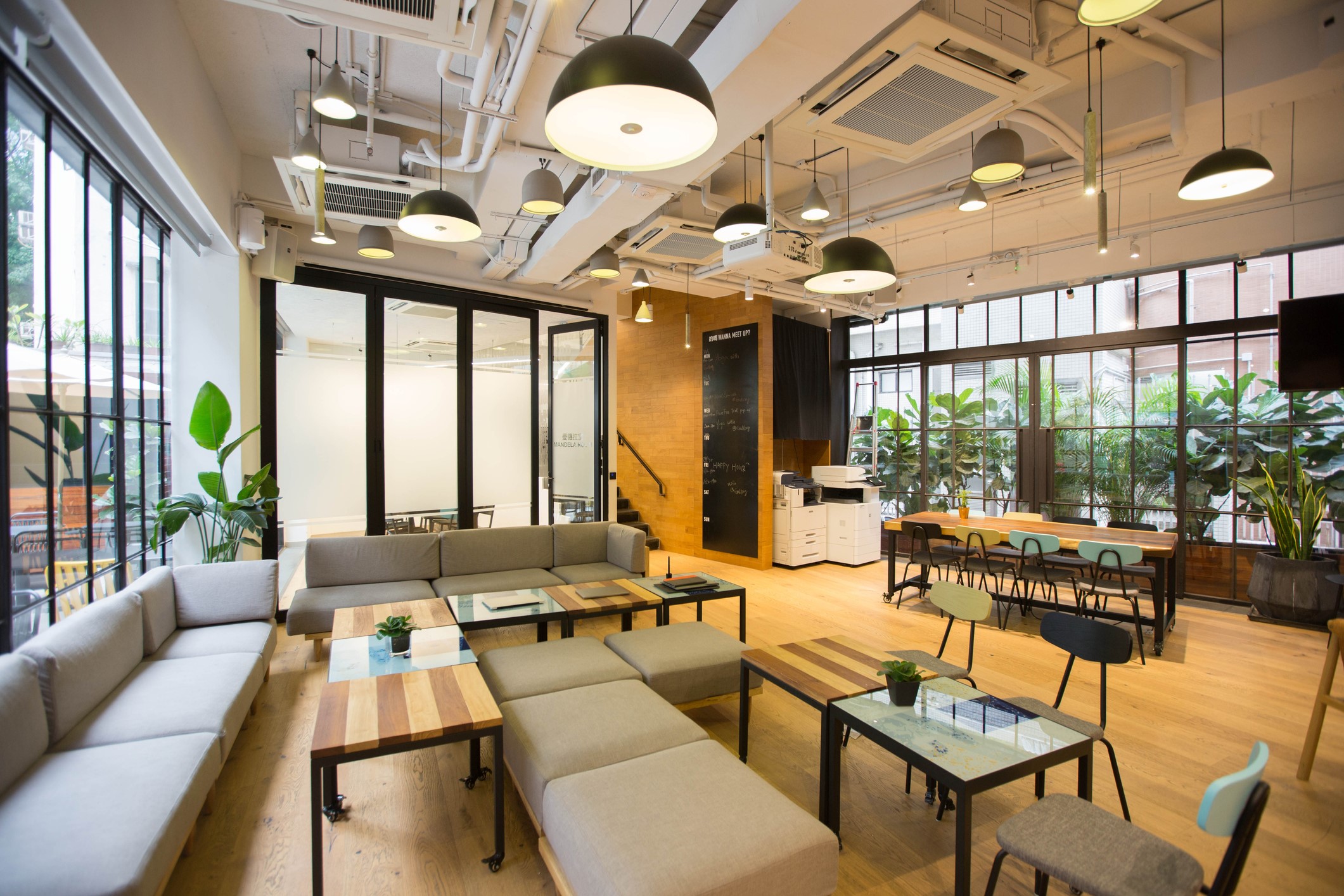Getting Started
The right office décor can elevate your mood, inspire the mind, and make you more productive while at work.
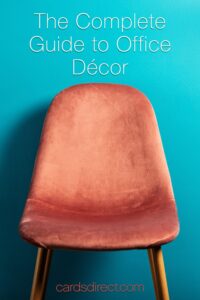
Many times office décor takes a backseat to our homes, especially with more modern open offices that limit the amount of space we have to make our own. We spend nearly as much time at the office as we do at home – some of us even more so – could you imagine a bedroom without furniture, a family room without those decorative throw pillows, or a kitchen without that clever wine rack? Even those of us that have home offices need a little help getting started. For some of us, adding office décor to these difficult spaces is no easy feat, so get a bit creative, and refer to this comprehensive guide for everything you need to improve your office décor.
Also provided are places to shop, highly-rated products, and links on where to buy these products. Have fun – and here’s to improving your office décor!
Nature & tranquility
Plants
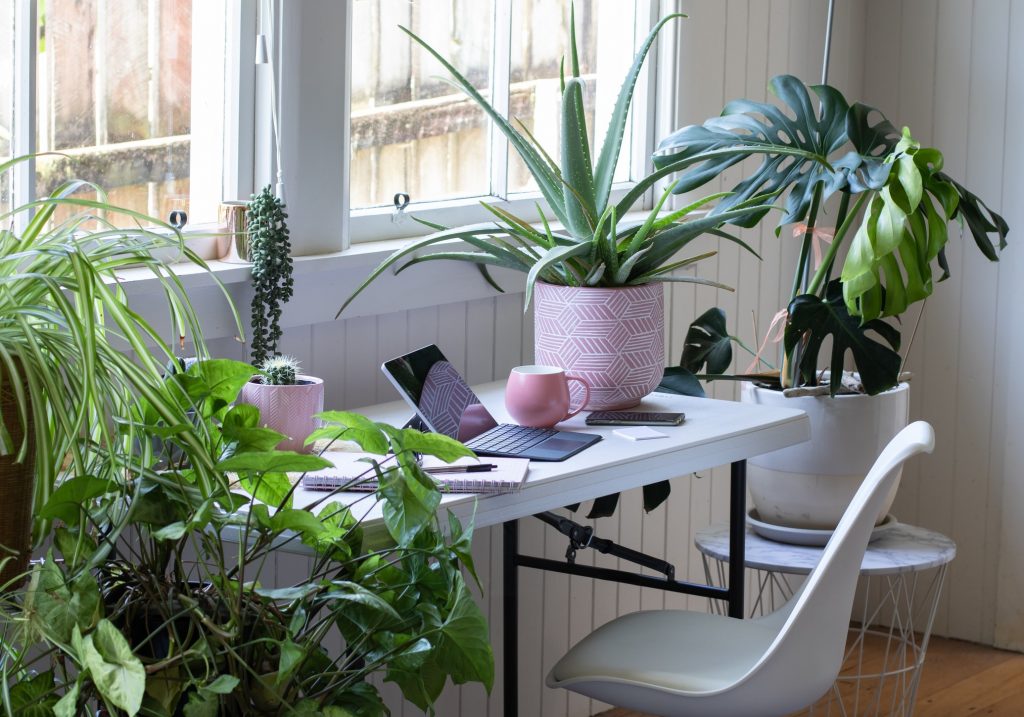
Office plants are essential to improving your office décor, but they can do a lot more than that. Many office plants can improve air quality, increase humidity levels while decreasing dryness, and combat illness, making them great for cold and flu season, especially in open air offices where viruses run rampant. Several studies, including one conducted at Texas A&M, have also shown that office plants can boost productivity, concentration, and improve your mood? But what are the best office plants? Can you choose flowers instead? What about cacti? Flowers do have their benefits as office decorations, they provide color, and some will even offer the bonus of aromatherapy. Though, your best bet would be to get a flowering plant or flowering cactus for your office décor. You want plants, flowering plants, and cacti that are low maintenance – look for those that do not require a lot of water and will survive in low lighting conditions. There are all kinds of office plants that will make great additions to your office décor, but here are some suggestions.
- African violets: Receiving their name from varying shades of violet and their African origins, African violets can survive in well-lit rooms but do not require direct sunlight. They grow better in shallow pots with adequate drainage. The soil does need to be continually moist, so if you are forgetful about watering, you may want to move on. Though, with a bit of effort, you will receive a beautiful office flower that blooms all year round. African violets are also safe for pets making them a great addition to your home office decor.
- Lucky bamboo: Lucky bamboo comes from the lily family and is not technically bamboo. It is believed to bring happiness and prosperity. Many nurseries sell curled lucky bamboo in unique shapes. You can also do this yourself, but the process is quite time-consuming. You can purchase straight or curled lucky bamboo for a nice addition to your office décor. Place your lucky bamboo in a pot with either soil or enough standing water to cover the base of the roots. If you choose standing water for your pot, place pebbles inside it to keep your lucky bamboo upright. Water maintenance is required once a week in either case. If you are using soil, provide a healthy dose of filtered water from your can (a decorative watering can will also make a nice addition to your office décor). If you are using pebbles and standing water, be sure to change the water once a week, making sure that the roots are covered with two to three inches of water each time. Ensure that your lucky bamboo plant is positioned in indirect sunlight. With minimal care, you could get several years out of a lucky bamboo plant. In a pot, these plants can also grow up to three feet in length! Keep lucky bamboo out of reach of your pets, as it can be harmful.
- Air plants: Air plants are all the rage these days, and not only will they spruce up any environment, but air plants also require such little maintenance that even the most novice plant owner should be able to take care of them. There are various forms of air plants, some with flowers, some without, all different shapes, colors, and varying sizes (all relatively small), and all are uniquely beautiful. No need for soil. You can place them anywhere just as they are inside a well-lit room. You can dip them in water and let dry, or you can mist them. Many sources recommend different watering schedules, though a good rule of thumb is probably once a week. However, you can usually stretch this without any serious repercussions. Air plants are safe for pets.
- Succulents: Many plants fall into the succulent category, including ZZ plants, aloe plants, and cacti. Other types of succulents include Echeveria (which come in several different colors), Sedum, Aeonium, Agave, Graptopetalum, and Dudleya, to name only a few. Green succulents like those from the Haworthia and Gasteria varieties require less sunlight but will survive better if placed by a window. Place your succulents in a pot with good soil and drainage holes, soak thoroughly but do not let them sit in water. After a good soaking, do not water your succulents again until the soil is completely dry. Certain succulents can be harmful to pets, so it is a good idea to look up the specific succulent you are purchasing. If you have an office pet or are looking to add succulents to your home office décor,here is a good reference.
- Bonsai trees: These require a bit more finesse, but don’t let that deter you, they make for beautiful office décor and home office décor as well. The most important way to ensure your bonsai’s longevity is proper watering. You need to pay close attention to what your tree needs. Watering on a schedule will not work. The simple rule of green thumb to follow is – when your soil is slightly dry water your bonsai. The easiest bonsai tree to care for is the ficus bonsai, as they can survive better in low humidity. Place near a window, use liquid fertilizer every one to two weeks, and repot every other year. You can prune as needed if your bonsai tree gets too full. Some species of bonsai trees can be harmful to pets; the SPCA has a thorough guide for helping you choose a pet-safe plant, click here.
- Cacti: Tropical cacti are used to growing in the shade, while desert cacti require more sun. Place cacti in a pot with soil, and water when the soil is completely dry. Certain types of cacti will grow flowers and others can be quite colorful on their own. Choose a cactus that will best compliment your office décor and theme. Cacti are not poisonous to pets but can irritate the stomach if ingested.
- Peace lilies: These have a misleading name, as they are not true lilies. As a part of the Araceae family, peace lilies are on NASA’s list of top ten household air cleaning plants. They will help you fend off harmful pollutants while improving your office décor. Peace lilies usually need a healthy watering about once a week, and will actually let you know when they are thirsty – if you see your peace lilies start to droop, it’s time for a drink. Place them in a pot with good drainage and quality soil. Transfer them to a larger pot if the roots start to show or they start drinking more water than usual. Pot size will usually not exceed ten inches during your peace lilies’ lifetime, which is usually about three to five years. Keep away from pets; peace lilies are toxic to dogs and cats.
- Spider plants: Another plant on NASA’s list of air quality plants. Spider plants will add a unique and fresh look to your office décor while combating harmful air pollutants. They also make nice hanging plants, perfect for office wall décor. Spider plants will survive in any type of light or shade. Water spider plants once a week for the first year, after the one-year mark you can water them less frequently. Do not over water. Spider plants are listed as non-toxic to animals but do have mild hallucinogenic properties when ingested by cats, similar to catnip. Every animal reacts differently to things, so it is always a good rule to keep them away from your plants.
- Snake plants: NASA likes snake plants too, so you can clean your air and improve your office décor. Do not over-water snake plants, especially in the winter. Try to avoid getting the leaves wet, and water when the soil is completely dry. Place in a pot with houseplant potting soil in indirect light. Snake plants are mildly toxic to pets so do your best to keep them away.
- ZZ plants: While they grow faster in bright indirect light, ZZ plants also survive quite well in low-lighting conditions. They require very little watering. It is recommended that you only water ZZ plants when the soil is completely dry, but they can actually survive months without any water whatsoever, making them a great addition to your office decor! They are, however, toxic to dogs, cats, and children so be sure to keep them out of reach.
- Jade plants: The best way to know when to water a jade plant is to touch the top of the soil, if it is dry then it needs a drink, but not until then. Direct sunlight is best for jade plants if you want them to grow properly, making them good for offices and home offices with windows. Place a jade plant in quality soil inside a pot with adequate drainage. Jade plants are also considered good luck, but not to pets, as they are poisonous, so keep them out of reach of your furry friends.
- English ivy: Another plant approved by NASA for improving your indoor air quality. They grow well in indirect light. You can place English ivy plants in hanging pots and on shelves, but they will also look great sitting on your desk. Water when the top layer of the soil is dry and make sure that your English ivy is placed in a pot with proper drainage. Fertilize approximately once a month. While English ivy will make a great addition to your office décor, avoid using it for your home office décor if you have pets, as it is toxic to them.
Pots, vases, and terrariums
 Complements to your plants are decorative watering cans, unique vases, colorful pots, and terrariums – all of these make for great office decorations. Terrariums for air plants should not be fully enclosed. Many plants require pots that drain, so be sure to choose a pot with holes in it when necessary. Wall vases and plant sconces will make nice additions to your office wall décor. You can choose hanging pots too, which can also help to keep your plant out of the way of pets for your home office décor. Feel free to add little figurines to your potted plants, beautiful stones and gemstones, as well as signs with adorable or inspirational sayings.
Complements to your plants are decorative watering cans, unique vases, colorful pots, and terrariums – all of these make for great office decorations. Terrariums for air plants should not be fully enclosed. Many plants require pots that drain, so be sure to choose a pot with holes in it when necessary. Wall vases and plant sconces will make nice additions to your office wall décor. You can choose hanging pots too, which can also help to keep your plant out of the way of pets for your home office décor. Feel free to add little figurines to your potted plants, beautiful stones and gemstones, as well as signs with adorable or inspirational sayings.
Fountains
 If you are looking to bring more natural beauty into your office, another great addition to your office décor is a small tabletop fountain. Plug-in and battery-operated tabletop water fountains make nice office decorations – they are great for periods of meditation and work well for soothing a stressful mind. To practice mindfulness at the office, purchase an indoor fountain for your desk. Let the sight and the sound of the water trickling down the rocks help you to relax. Indoor water fountains can help reduce anxiety, generate new ideas, and improve concentration. There are many styles you can choose for your tabletop fountain too, pick one that will complement the rest of your office décor or use it as a staple piece while decorating.
If you are looking to bring more natural beauty into your office, another great addition to your office décor is a small tabletop fountain. Plug-in and battery-operated tabletop water fountains make nice office decorations – they are great for periods of meditation and work well for soothing a stressful mind. To practice mindfulness at the office, purchase an indoor fountain for your desk. Let the sight and the sound of the water trickling down the rocks help you to relax. Indoor water fountains can help reduce anxiety, generate new ideas, and improve concentration. There are many styles you can choose for your tabletop fountain too, pick one that will complement the rest of your office décor or use it as a staple piece while decorating.
Rock and sand gardens
 Sand gardens are another way to transform your desk into a Zen-like space. Miniature rakes, tiny stones, and your own unique artistic touches will make your Zen sand garden perfect for your office décor. Zen gardens will help you to relax while adding visual appeal to your desk. Some sand gardens even have magnetic pendulums that swing on their own to create intricate designs. Other forms of sand art involve oceanic, multicolored, or outer space-inspired themes that are encased in glass or plastic. The sand is inside a small window that you flip upside down to create stunning and tranquil works of art.
Sand gardens are another way to transform your desk into a Zen-like space. Miniature rakes, tiny stones, and your own unique artistic touches will make your Zen sand garden perfect for your office décor. Zen gardens will help you to relax while adding visual appeal to your desk. Some sand gardens even have magnetic pendulums that swing on their own to create intricate designs. Other forms of sand art involve oceanic, multicolored, or outer space-inspired themes that are encased in glass or plastic. The sand is inside a small window that you flip upside down to create stunning and tranquil works of art.
Fish tanks & aquariums
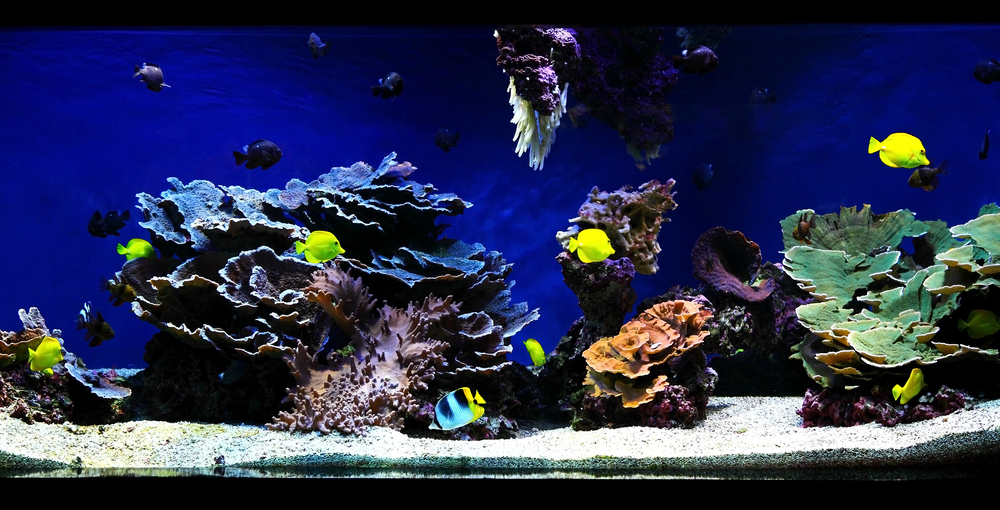 Fishing for compliments on your new office décor? Try adding an aquarium. While not every office or owner is equipped to handle a fish tank, there are those that would benefit quite well from one. Fish tanks and their inhabitants are beautiful, relaxing, and can additionally offer physical, emotional, and intellectual benefits associated with their calming effects. While aquariums can certainly add to your office décor and home office décor, you must remember that they require a fair amount of upkeep. If you are in and out of the office all day and do not have a designated person to feed these beautiful creates properly, it is best to choose something else to add as a statement piece to your office décor.
Fishing for compliments on your new office décor? Try adding an aquarium. While not every office or owner is equipped to handle a fish tank, there are those that would benefit quite well from one. Fish tanks and their inhabitants are beautiful, relaxing, and can additionally offer physical, emotional, and intellectual benefits associated with their calming effects. While aquariums can certainly add to your office décor and home office décor, you must remember that they require a fair amount of upkeep. If you are in and out of the office all day and do not have a designated person to feed these beautiful creates properly, it is best to choose something else to add as a statement piece to your office décor.
Aromatherapy
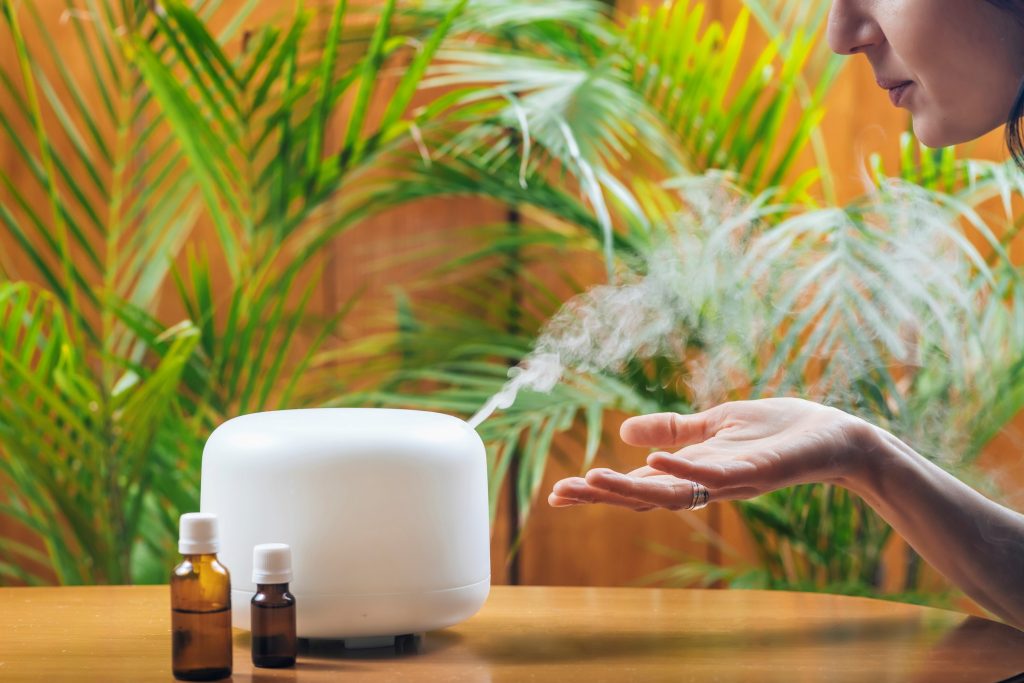
Ah, the power of scent – the sense that most closely connects to our memories – and one that can elevate your mood while at work. You can purchase a reed or essential oil diffuser, wax melts, a nice candle (if your office allows it), room sprays, or even a calming air fresher. However, aromatherapists typically recommend against store-bought air fresheners, as many do not contain the pure and natural elements found in essential oils. If you are looking into an essential oil diffuser there are four main types (see below).
- Nebulizer: With a nebulizer, all you have to do is add or attach your favorite essential oil right to the machine. It disperses it in a fine mist throughout your area without the use of heat or water. A highly-recommended nebulizer is the Magnificent 2.0, but there are many other models, offering different features, pros, and cons.
- Ultrasonic diffuser: This essential oil diffuser uses water to displace essential oil into the air and can also double as a humidifier. Check out this high-rated ultrasonic diffuser by Zen Breeze.
- Evaporative diffusers: Typically, you will place several drops of your essential oil on a filter or pad inside the machine, and it will disperse it throughout your area via a fan. Here is an evaporative diffuser that you can plug right into your computer at work through a convenient USB port – check out the PureGuardian.
- Heat diffusers: Instead of water or a fan this essential oil diffuser uses a heating mechanism to diffuse the essential oil into the air. Here is an electric heat diffuser you may want to try – eWarm by SpaRoom.
Whatever method you choose to incorporate aromatherapy into your office décor, make sure it is okay with your employees and your boss. Don’t choose an overbearing scent – something subtle and light will work best.
Ergonomics
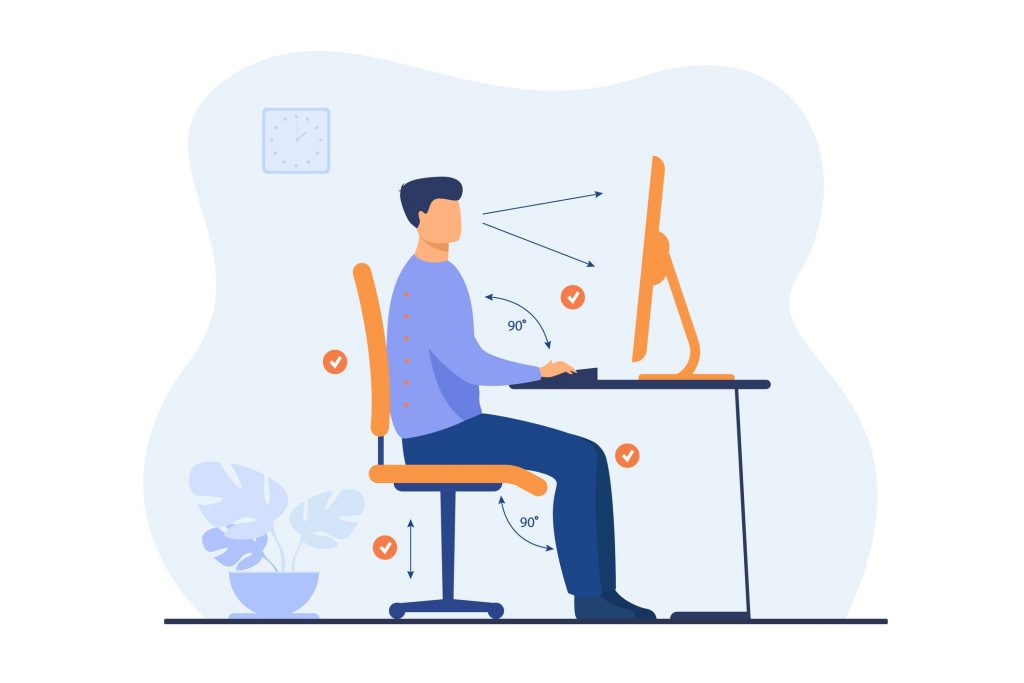
Ergonomic products are designed for efficiency, comfort, and often proclamations of improved health in the workplace. Ergonomic office products include specialty keyboards and mouses, standing desks, chairs, and footrests. You can view these products below. Hover over the images for product names and refer to their descriptions for more information as well as links on where to buy top-rated models.
Ergonomic keyboards
The jury is still out on ergonomic keyboards. While manufacturers claim that ergonomic keyboards cause less strain on the wrists, forearms, shoulders, and neck (while alleviating or preventing numerous muscular problems), there is no actual scientific evidence to support such health benefits. An additional claim is an improvement in work efficiency, as the keys on ergonomic keyboards are typically hyper-sensitive and do not require near as much pressure to activate – in other words, you don’t have to push down as far to get your typing done. Still, this additional claim is often refuted, as others say that it actually takes longer to type because you have to retrain yourself on the product. Whatever your stance is on ergonomic keyboards they certainly look cool, and for some, they will make a nice addition to your office décor. There are four types of ergonomic keyboards:
- Split keyboard: The keys are broken up into two or three groups, allowing its user to type at various angles. Wirecutter recommends the Microsoft Sculpt Ergonomic Keyboard – at a relatively low price you can purchase it from Amazon here. Or you can choose the high-end ErgoDox keyboard and have it completely customized to your specifications.
- Contoured keyboard: The keys are broken up into two separate groups that are shoulder-width apart. The function keys are positioned very close to the thumbs to limit any additional movement. Take a look at this one on Amazon here.
- Angled split keyboard: Said to adapt to the more natural positioning of your wrists, forearms, and elbows, an angled split keyboard is much the same as a split keyboard but with the middle of the keyboard arched upward. Take a look at this keyboard that you can adjust to an angled split keyboard; you can purchase it from Amazon here.
- Handheld keyboard: Just as it sounds, this is a keyboard that you hold in your hands while operating. Many are wireless and will allow you to move about a room while typing. Most also double as a gaming controller. AlphaGrip offers an all-in-one ergonomic and gaming keyboard that you can check out here.
Ergonomic mouses
Applying the same concept as ergonomic keyboards, ergonomic mouses are said to put your wrist in a more comfortable and natural position to avoid long-term stress-related muscular injuries. Logitech makes several nice ergonomic mouses, you can check out one of Wirecutter’s picks here.
Ergonomic mouse pads
Ergonomic mouse pads give your wrist additional support with a raised portion of the pad. Many are made from gel or other malleable materials that contour to your wrist. Take a look at this one from Amazon here.
Standing desks
Many people enjoy standing desks because they believe it helps with shoulder and back pain caused by sitting at their desk for extended lengths of time. Ergonomic chairs are also said to help with these problems. Though, if you go abruptly from sitting all day to standing all day, it could have adverse effects, also resulting in back pain, leg pain, or foot pain. It is best to ease into a standing desk with short periods of use that you build up over time until your body is more comfortable with the change. Studies with standing desks are inconclusive, especially when it comes to weight loss. If you are simply standing in one place instead of sitting, the additional calories burned are quite minimal, only about eight calories more an hour. Harvard has an interesting write-up on standing desks; you can check it out here. Some standing desks are just constructions made of cardboard, plastic, aluminum, or another material that merely elevates your computer monitor to eye-level when you are standing. Then there are actual raised desks. Some desks can be adjusted to both sitting and standing positions, either manually, with a counterbalance or crank, or through the use of a motor or gas lift. There are also more intricate options, like sit-stand-recline desks, which offer a whirlwind of options for your working pleasure, usually with quite a hefty price tag.
- Elevated working stations: To add to your office décor while improving your health and comfort, you can start off small with elevating working stations that will run you about $25. The Ergodriven Spark was featured in Wirecutter as a good starter desk.
- Adjustable standing desks: If you are looking for a true adjustable standing desk, and are willing to spend the money, Jarvis standing desks have been featured in Wirecutter as the top standing desks four years in a row.
- Sit-stand-recline desks: If you are looking to go completely over-the-top with your office décor, check out this sit-stand-recline desk. This is great for someone with serious back problems or just those who truly value comfort. Add it to your home office décor or make a bold statement right at work, but start saving now, because it’s quite expensive. You can buy the Sit-Stand-Recline Workstation – Module 500 for $4,995.00.
Ergonomic chairs
Ergonomic desk chairs are typically adjustable chairs that raise, lower, tilt, swivel, and adjust in other ways to promote better posture, increased comfort, as well as optimal lumbar and back support. You can purchase a good straight-back ergonomic chair here or see below for additional options. There are many interesting takes on ergonomic office chairs, including high-back ergonomic chairs, kneeling chairs, and stability balls (see below) which are basically an exercise ball converted into a desk chair to improve back strength (though, once again, this is oftentimes debated). You can find a number of ergonomic chair options here at Amazon.
Ergonomic footrests
Ergonomic footrests are said to improve circulation in your legs and feet while also acting as the perfect complement to adjustable desks and ergonomic desk chairs. For ergonomic chairs to do their job properly, one must have their feet flat, and some ergonomic footrests will help shorter people to achieve this. Many ergonomic footrests also move, some are spring-loaded, and others sway back and forth, which encourages people to move their feet a bit during the workday, improving blood flow and burning calories. You can purchase any number of ergonomic footrests, but here is a top pick.
Ergonomic foot hammocks
Also offered are foot hammocks, check this one out.
Desk treadmills & balancing boards
Desk treadmills and standing desk balancing boards are also now a thing; click the links to take a look.
Headphones
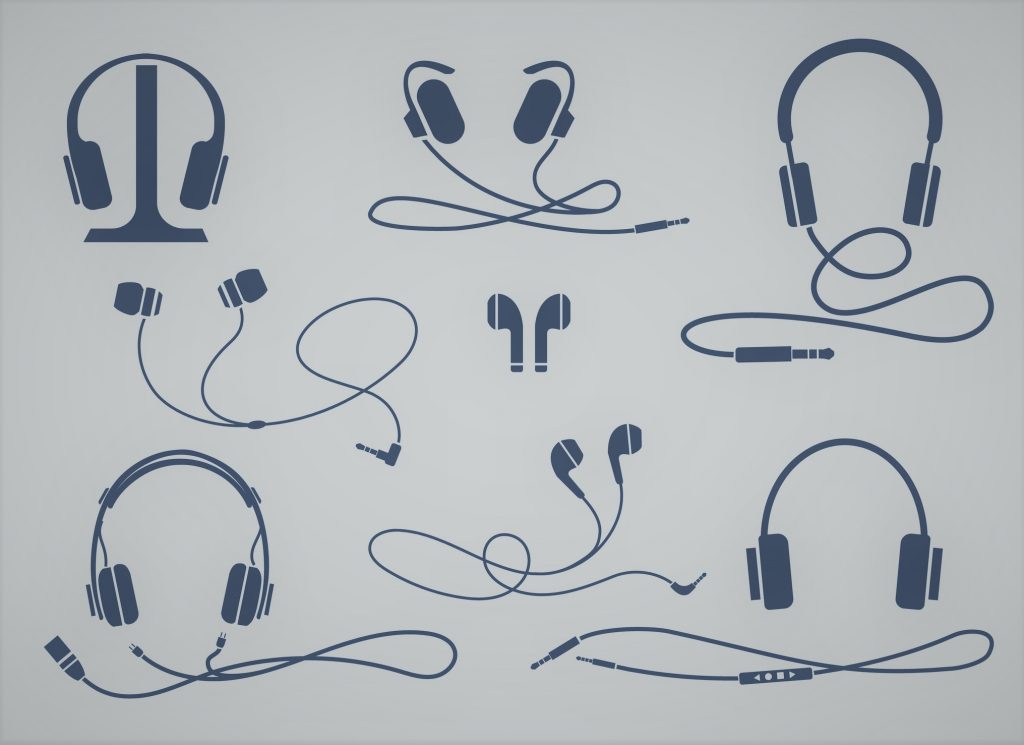
While headphones aren’t technically office décor, in many working stations, especially open office plans, you are going to need a pair. Hover over the images for product names and refer to their descriptions for more information as well as links on where to buy top-rated models.
- In-ear monitors or in-ear headphones (IEMs): In-ear headphones go slightly into the ear canals, blocking out much outside noise for a more immersive musical experience. As technology grows with in-ear monitors, they have begun to compete with large over-ear and on-ear headphones, due to their small size, portability, and staying power while at the gym or on a run. Check out this pair from Bang & Olufsen, Wirecutter’s top pick!
- Earbuds: Resting on the outer ear, earbuds are lightweight and compact. Serious audiophiles will scoff at the sound quality when compared to over-ear headphones, though higher-end brands like Apple are making them very popular these days with improved features and sound and their new wireless AirPods. Google is also in on the fun with their Google Pixel Buds, along with numerous other brands. Earbuds can be connected or wireless depending on the design.
- On-ear headphones: These larger headphones go over your head and rest on your ears, but do not go completely over them. One-ear headphones allow some outside sounds to pass through, which can sometimes be better for certain working environments. They are typically lighter than over-ear headphones. Be sure to find a pair that doesn’t put too much pressure on your ears. Check Wirecutter’s top pick by KEF.
- Over-the-ear headphones: If you want to be completely immersed in sound with little to no outside noise, then over-the-ear headphones are your best bet. They fit over your head, and the phones completely cup your ears, which is very nice if you are trying to shut out all distractions. Cons? They are quite bulky, may cause your ears to sweat, and quality pairs can be rather expensive. Check out Wirecutter’s top pick – Oppo PM-3.
- Closed-back headphones: These will help to isolate sounds, as the back of the headphones are closed off to prevent surrounding noise. Check out this pair from Sennheiser.
- Open-back headphones: Open-back headphones allow some outside noise to enter, but actually provide a very immersive stereo-quality experience. They may be better for working environments where you need to hear (to a certain degree) what is going on around you. Check out this pair from HIFIMAN here.
- Noise-canceling headphones: These create a particular sound wave that assists in canceling out surrounding noise. Check these out – Bose QuietComfort (Series II) Wireless Headphones.
- Wireless headphones: There are various types of wireless headphones. While all wireless headphones use radio frequencies (RF) to connect, most operate via a short wavelength channel called Bluetooth. Bluetooth headphones come in many forms including neckband headphones, wireless clip-on headphones, wireless in-ear headphones, wireless earbuds, wireless on-ear headphones, and wireless over-ear headphones. There is also the difference between wireless headphones and true wireless headphones, as true wireless headphones literally have zero wires while wireless headphones may use a wire to connect the left earphone to the right earphone. New wireless headphone technology is even making real-time language translation possible, though there is still a ways to go, see Google Pixel Buds and Bragi’s The Dash Pro True Wireless Intelligent Earphones.
- Clip-on headphones: Coming in many different styles, these headphones clip on your ears to secure them in place, making them great for the gym or your office treadmill. Here’s Wirecutter’s pick – JLab Audio’s Epic Sport Wireless Earbuds.
- Sweat and water-resistant headphones: Another pair of headphones that are great for the gym, these headphones will prevent damage caused by a sweat-producing workout; some are even designed to work in the pool. Take a look at the Powerbeats3 by Dre.
Personalize your desk
Personalized office products are another great way to improve your office décor. You can purchase a plaque with your name on it, engraved pens, office stationery, and all sorts of other products! See below.
Stationery
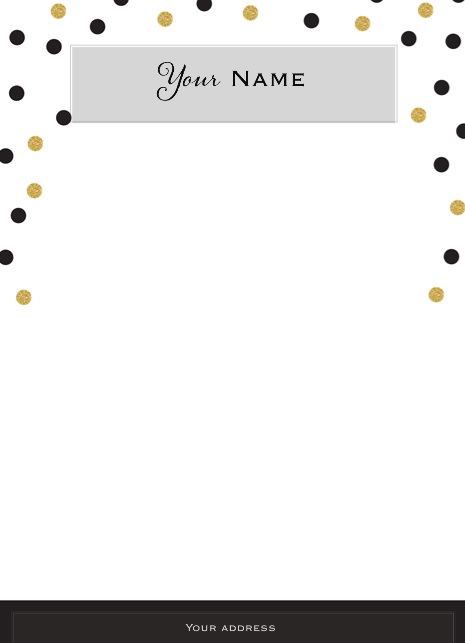
Colorful, unique, and personalized stationery is great for your office décor. Look for decorative or customizable Post-it® notes, letterhead, spiral notebooks, notepads, presentation folders, binders, and more. Our site offers a number of these products and so does 123Print; you can choose from all sorts of professionally designed templates or create your own custom stationery. Make a statement and improve your office décor with these practical and stylish office products.
Organizational

Desk organizers will also help to keep pens, pencils, paper clips, folders, and all your other office products in place. Many even offer a designated area for your car keys, wallet, and sunglasses. You can class it up with metallic, wooden, or leather desk organizers or be a little playful with a colorful plastic or fabric desk organizer.
Calendars

Calendars are a great way to keep track of important dates at work or count down to that much-needed vacation. Calendars will also improve your office décor and show off your unique interests, style, or sense of humor. Choose a calendar for your desk that says something about you – you can even have them personalized to include your name, business title, and contact information. You can purchase some great ones here.
Water bottles
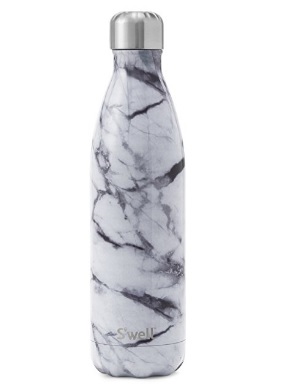
Decorative water bottles have become very popular. Many act as an additional fashion accessory or statement to your office wardrobe. The emergence of brands like S’well has started a whole new craze in office décor.
Office wall décor
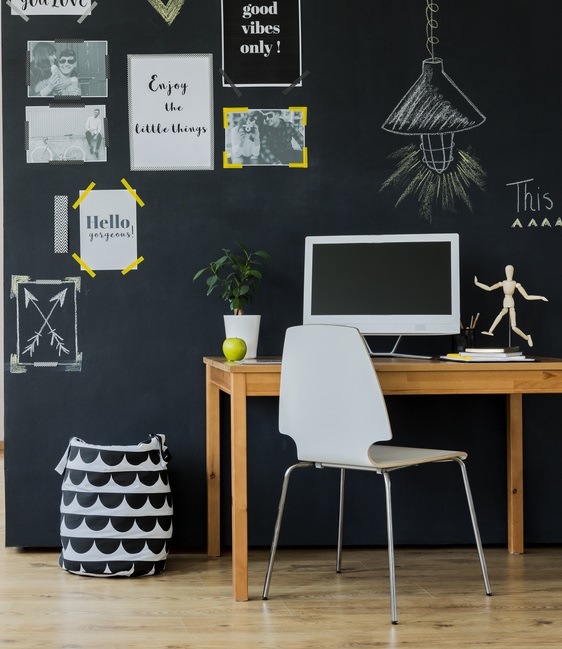
Office wall décor can include:
- Sculptures (you can also find smaller sculptures for your desk)
- Framed art or paintings
- Pictures (add family photos to your desk too)
- Unique shelving
- Mirrors
- Sconces (wall lamp sconces, candle sconces, plant sconces)
- Clocks (also for desks)
- Wallpaper
- Painted accent walls
- Chalkboard walls
- And more.
Hover over the images above to view product names. There are limitless ways to refine your office decorations, display your interests, and liven up your space. Carefully select office wall décor that speaks to you over time. You don’t have to rush out and buy everything at once. Office wall décor can work in cubicles, an enclosed office, or at your home office. Light-colored artwork, softly colored accent walls, and mirrors can open up small spaces and make them appear larger. Colorful office wall décor can elevate your mood. Uniquely crafted shelving can assist in organizing your office, adding additional space, but also doubling as artistic accents. A nice painting from an artist you enjoy can be meditative – it can help you to reflect, assist you in thinking deeper and generating more creative ideas. You can also incorporate your own artwork into your office wall décor if you like to draw, sculpt, or paint. You can even include artwork that your children have made in school. Wall lamps, plant or candle sconces will add classic, natural, and reflective elements to your office wall décor. Add some office pictures too – include pictures of your family, your pets, fun vacations – you can also add your own artistic photos or include office pictures from your favorite photographer – still-lifes and landscapes make very nice office wall décor. If you have a specific hobby you are interested in, like cars or a certain sport, perhaps your office pictures should reflect that. Framed magazine clippings, famous quotes, and inspirational sayings will also make nice additions to your office wall décor. There is no end to what you can do. Start looking for ways to improve your office wall décor, take your time, shop around, you’ll be amazed at how much fun it is. You may even want to create a budget for your office wall décor – and be careful, it’s easier than you might think to exceed it.
Lighting
 There are all different types of lighting. In addition to the decorative lamps, fixtures, and bulbs you can get to improve your office décor and even your office wall décor, the type of lighting you use can affect how you work – mood lighting, accent lighting, natural light, even the color of your lights – these are all things to consider. Certain lighting conditions can improve your mood, like natural light, blue light is said to be energizing, bright white or yellow light is good for reading and studying, while softer lights are nice for winding down. Some bulbs from companies like LIFX and Phillips Hue are Wi-Fi and app-controlled – they can adjust to many different colors and levels of brightness.
There are all different types of lighting. In addition to the decorative lamps, fixtures, and bulbs you can get to improve your office décor and even your office wall décor, the type of lighting you use can affect how you work – mood lighting, accent lighting, natural light, even the color of your lights – these are all things to consider. Certain lighting conditions can improve your mood, like natural light, blue light is said to be energizing, bright white or yellow light is good for reading and studying, while softer lights are nice for winding down. Some bulbs from companies like LIFX and Phillips Hue are Wi-Fi and app-controlled – they can adjust to many different colors and levels of brightness.
Books and magazines
 To wind down or inspire the mind during creative blocks, keep some books and magazines around your office. They will look nice, add to your office decor, and boost your intellect.
To wind down or inspire the mind during creative blocks, keep some books and magazines around your office. They will look nice, add to your office decor, and boost your intellect.
Home office décor
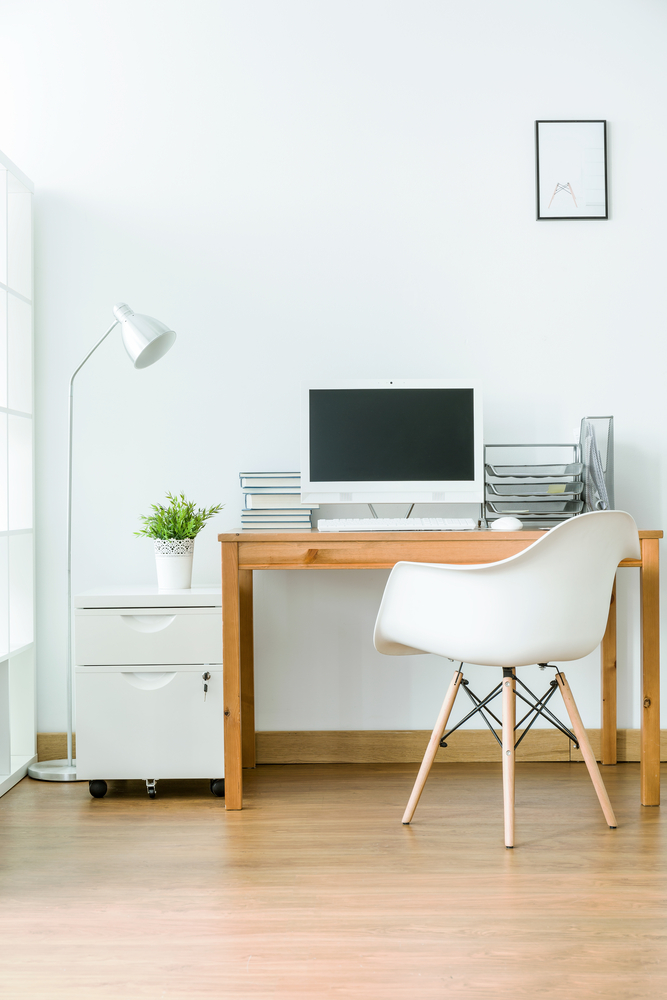
Home office décor ideas and study room ideas can be generated for the other sections of this article. You can create a cozy desk with many of the office decorations seen above, including plants, personalized stationery, and office pictures of your family and pets. Home office desk ideas can also consist of interesting desk sculptures, wall art, practical and decorative organizational elements. Get yourself a nice fancy pen too. Try adding some of your favorite books to some floating shelves or free-standing shelves. Add some coffee table books or interesting magazines that you can flip through in your downtime. Invest in some nice office furniture. Candles will probably be best suited for your home office décor, they add great ambiance and are an effective tool to be used in aromatherapy. Go pick out a couple of scents you like. You can choose modern home office décor or go for a more classical approach (see various interior design styles below).
Interior design styles
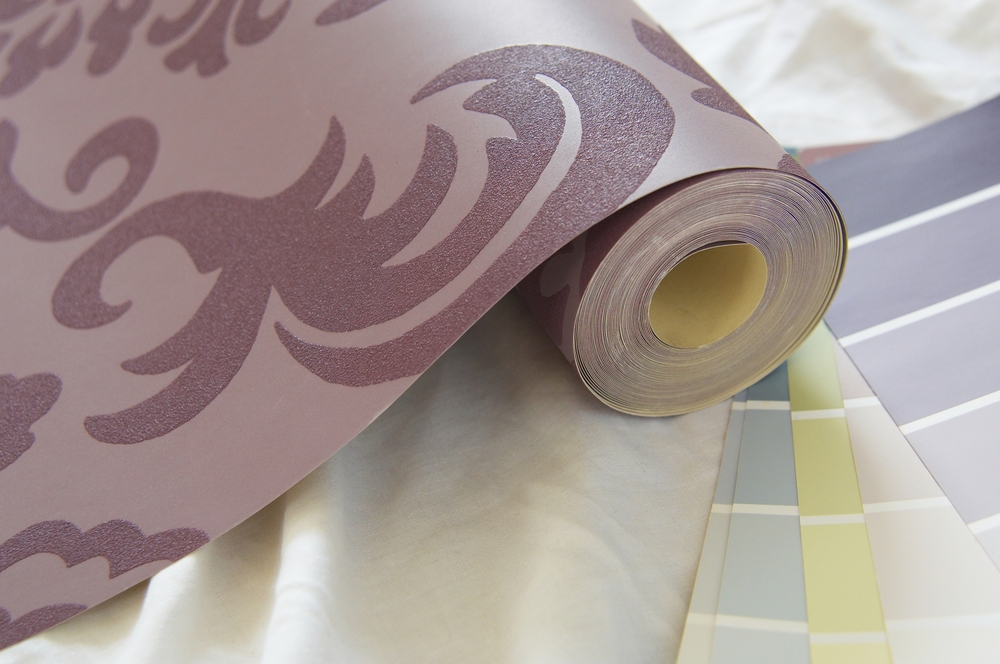
- Modern: The interior design style that started in the 20
th century features decorative elements that typically include simple, clean colors, a lot of white, but dark contrasts to add depth. Materials like metal, glass, and steel. There is usually an absence of clutter. - Contemporary: This is an interior design style that banks off current trends. When choosing a contemporary theme, make sure it is classy, fluid, and unique to your own personal tastes. You can add fresh plants to wood, brick, and marble backdrops. Contrasts of dark and light colors are also nice.
- Traditional: Ornate wood, several fabrics, patterns like paisley, plaid, damask, and stripes, as well as dark, rich color schemes can be seen all throughout a traditional interior design. The furniture is sturdy and comfortable, and the décor is cozy while typically conventional. You may see framed art, antiques, mirrors, sculptures, lamps, flowers in vases or potted plants, drapes, plush furniture, candle stands, fireplaces, and soft accent pillows. Some influences can come from classical 18
th and 19th-century designs from England, Britain, and France. - Transitional: A bit of modern, a bit of traditional, equal parts stylish and cozy, that’s the bones of this interior design style. You’ll see contemporary accents and accessories sitting atop an ornate wooden coffee table, state of the art appliances on glass shelves across from a large comfy sofa and chairs. Color schemes feature typically neutral palates.
- Minimalist: While modern also works on an absence of clutter, minimalist takes this even further. It is clean, in colors, lines, and its limited amount of furniture or decorations. It is functional and never over-the-top.
- Industrial: If you have ever seen an urban loft, then this should give you some idea. The industrial look works off the elements of an old renovated space or warehouse or gives the appearance of doing so. You will often see exposed ceilings, Edison bulbs, track lighting, dangling light fixtures, and raw natural elements like metal and wood. This type of interior design style usually capitalizes on high ceilings and large open spaces without much functional furniture, along with a sporadic piece of art, a sculpture made out of similar materials, or an interesting photograph or two to add personality and maybe a bit of color.
- Mid-century modern: Retro art, usually indicative of the 1950s and 60s, simple furniture, it’s minimalistic in many ways by with more nostalgic color pops. Additional design elements may include geometric furniture and patterns, simple fabrics, as well as a mixture of traditional and non-traditional materials like plastic, metal, glass, and wood.
- Art deco: A geometric-centric style popular in the 1920s and 30s with featured elements like mirrors, glass, obsidian, jade, rock crystals, ivory, wood, chrome, and silver. You are also likely to bold pops of color. Art deco strives for anti-traditional modishness.
- Scandinavian: Artistic in its functionality and simplicity, Scandinavian design features very basic Nordic-inspired furniture (without too many pieces) made very straight-forward with no lavish accents. Typical elements used with this type of interior design are plastics, pressed-wood, aluminum, and sometimes steel. Designers will make use of natural light, open spaces, perhaps a plant or two, and maybe a colorful throw blanket or fur. Scandinavian design, also banks on minimalizes so you are unlikely to see many unnecessary accessories.
- Bohemian: An interior design style based on free-spirited lifestyle and counterculture ideals. Rules are not followed; you do what you feel, with very unique accessories and items personal to each designer. Room accents may be acquired from interesting shops, flea markets, or during a person’s travels and meshes together pieces and furnishings from all different types of interior design styles to create one unique work of art.
- Hollywood regency: Also known as Hollywood glam, this is just like it sounds, where glitz is certainly the way to go. This style will feature bold colors, velvet or tufted furniture, extravagant accents, gold and marble accessories, antiques, and lavish statement pieces. It may infuse bits of Victorian design as well.
- Shabby chic: Weathered wood and fabric furniture in oftentimes light colors, though some darker woods can be used. Soft florals and vintage accessories in a light and airy space reminiscent of the cottage lifestyle.
- Eclectic: Zany but cohesive, you will likely see wild pops of color or patterns, and styles taken from many different interior designs to create one eye-catching space.
- Rustic: Natural and often imperfect or unfinished elements like wood and stone infuse the outdoors with the indoors. Think indoor picnic tables, swinging chairs, wood beams, barn doors, lattice, plants and flowers, firewood, and corresponding decorations, furnishings, and accessories.
- Country: Think of all the things you would find in a country home. Wooden furniture, striped or floral patterns, arts and crafts, mason jars, handmade or antique furnishings from a country store.
- English country: For a more feminine look, try English country. Choose floral patterns (a lot of roses) and accents. Floral colors like greens, reds, pinks, and blues. Plush, tufted or skirted furniture and ornate wood furnishings, exposed wood, patterned wallpaper, antiques and other classical decorative accessories (lots of them).
- French: This interior design style uses ornate, elegant, wooden, and fabric furniture with corresponding accents in gold and bronze. Layered drapes, lush flowers, and antique accessories. Colors can range from muted tones to bright and Mediterranean with usually one predominant color repeated throughout.
- French country: Provencal style with ornate furnishings and accents. Ruffles. Heavy linens. Materials like wood and porcelain. Books with classically decorative covers. Antique floral arrangements and mixed color patterns. While there are many warm and earthy colors like red, yellow, and gold, colors can be both muted and vibrant. Distressed natural elements like brick and stone also work well.
- Mediterranean: The coastal areas of Europe like Spain, Greece, and Italy come alive with this interior design style. Soft and sometimes pastel colors, but also earthy colors, and those reminiscent of the land, sea, and sky of those areas. You will also see burnished accessories, textured fabrics and walls, velvets, and linens.
- Moroccan: Bold and richly-colored intricate patterns on rugs and accents like throw pillows and throw blankets against typically ornate wooden furniture and accessories.
- Asian: These interior design elements are naturally- inspired and taken from countries like Japan, China, Vietnam, and Thailand. Think bamboo, mythical and animal sculptures, ornamental, hand-painted, and even floral-accented furnishings, fountains, rock gardens, and other accessories following in this scope.
- Coastal: Beach house décor with oceanic and nautical elements that include seashells, sea creatures, lighthouses, sailboats, driftwood, and more. Furnishings can include dark and light woods. Fabrics are typically blue and white with golden accents. You don’t have to live on the coast to give your interior design a light, airy, and nautically-inspired feel.
- Tropical: Think ocean-side in a tropical destination like Hawaii – you’ll have beach-inspired art but with lush, colorful flowers and accents.
- Western: Animal prints or pictures of some roaming or grazing, taxidermy, skins or furs, leather, and wood furnishings. You may see metal in certain places, along with plaid patterns and rugs, antiques, stone hearths, and mantled fireplaces.
- Steampunk: Merging Victorian elements with industrial, mostly steam-powered-inspired inventions – it gives a strange classical science fiction feel with Leonardo da Vinci-like contraptions or accessories. Think H. G. Wells’
The Time Machine or movies like
Mad Max or
Waterworld. You will likely see Edison blubs, sepia tones, copper, metal, wood, red or brown leather, brick, exposed gears, refurbished furniture, antiques, and old maps or globes.
Interior design rarely utilizes just one style, so feel free to incorporate various elements into your home or office décor while creating a uniform look.
Feng shui
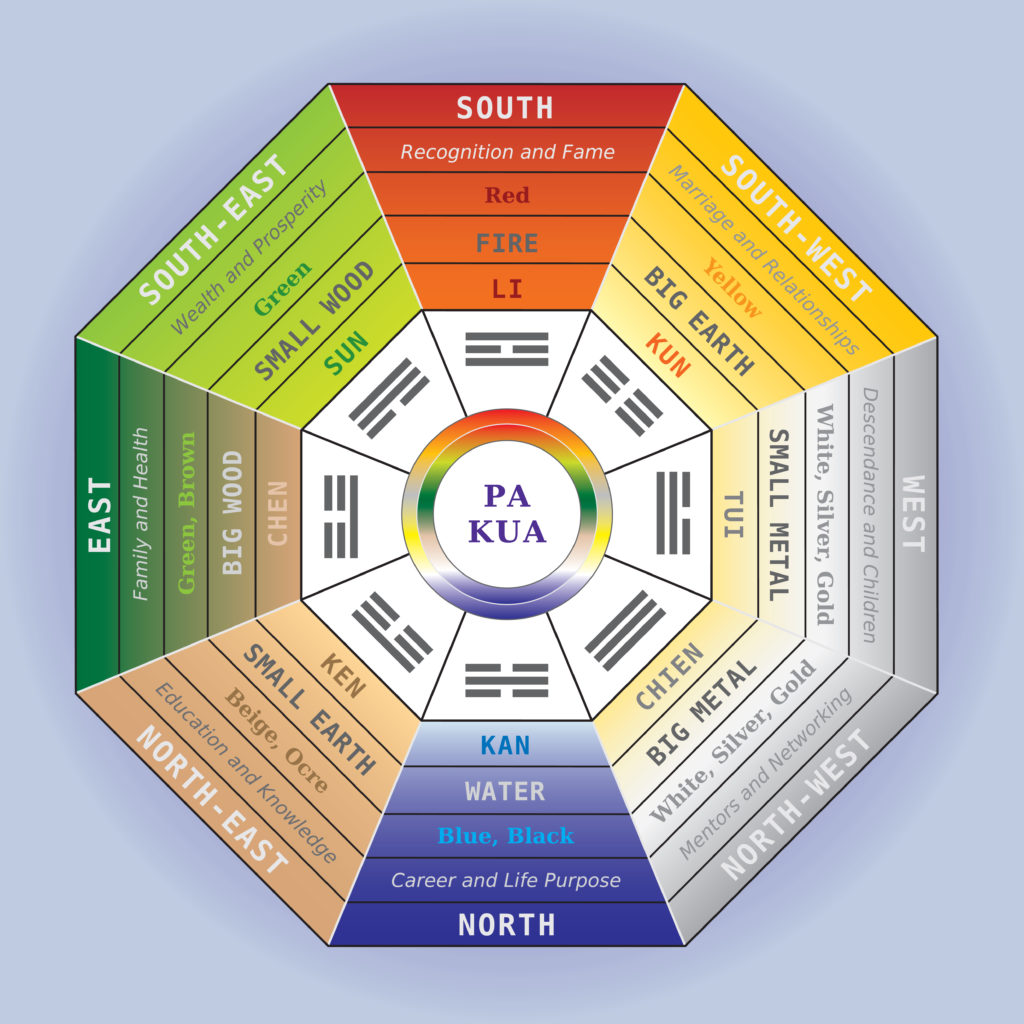
Feng shui is a concept originating from China that relies heavily on balance and harmony to produce a positive energy flow that can help to improve mental and spiritual wellbeing. A lot of times feng shui is incorporated into your interior design where elements are added are arranged in a certain way to optimize the flow of positive chi or energy. These elements are placed throughout rooms according to the nine quadrants of a bagua map, navigated by a traditional compass or Westernized grid. These nine quadrants include wealth, fame, love, family, health, children, wisdom, career, and helpful people – all of which are assigned their own element and colors.
There are five essential elements to feng shui that symbolize different aspects of mental, spiritual, physical, and emotional wellbeing, these include:
- Earth: You can incorporate many of the elements talked about early in this guide to bring stability and balance (earth) into your home and office decor, including plants and flowers, indoor fountains, Zen gardens, and landscape imagery, fish, rocks, and crystals.
- Water: Aquariums, oceanic sand art, indoor fountains, water-inspired decor, paintings and photographs that include water or aqua colors, as well as reflective surfaces such as mirrors will all help to bring wisdom and serenity (water) into your home or office decor.
- Fire: Reds and oranges, candles, and of course a fireplace will bring passion and energy (fire) into your home or office décor.
- Wood: Bring some natural elements into your home or office décor to promote vitality and growth (wood) – you can start with wooden furniture and some plants.
- Metal: Add metal accessories, furniture, and décor to promote mental sharpness and logic (metal).
Each room of your home follows a certain set of rules when decorating according to feng shui. Your office décor and home office decor should adhere to these:
- Set your desk facing the door to promote power and invulnerability.
- Introduce gentle colors and earth tones like green and yellow for serenity.
- Add plants to improve focus.
- Add red to liven things up.
- Incorporate objects that mean something to you and bring fond memories with family or friends.
- Declutter your space.
It’s time to start improving your office décor!
All these tips should make for a great office space. Refer to this guide any time you need help improving your office décor.

